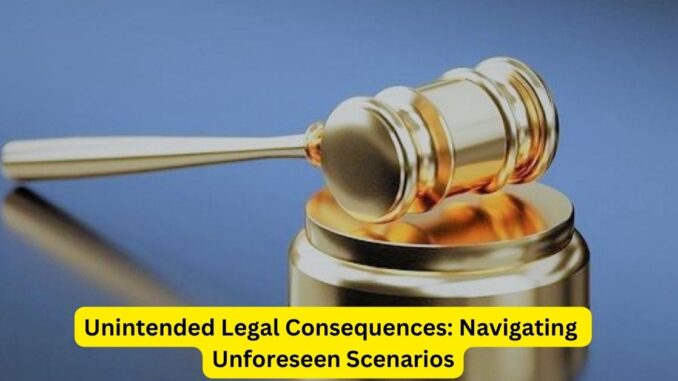
In the intricate web of legislation, regulations, and policies, the law often unfolds like a delicate tapestry, with unintended consequences lurking in its folds. Unforeseen outcomes can arise when laws interact in unexpected ways or when new technologies disrupt established norms. Navigating these uncharted waters requires vigilance, adaptability, and a commitment to upholding justice.
Unintended legal consequences can stem from a variety of sources. One common scenario is the unintended interaction between different laws or regulations. What might seem like isolated rules can overlap in ways that legislators never intended, resulting in unforeseen complications. This complexity can create confusion for both individuals and legal professionals, as they attempt to decipher the implications of these interactions.
The rise of technology has introduced a new dimension of unintended consequences. As innovation outpaces the development of appropriate legal frameworks, gaps emerge that can be exploited. For example, the advent of social media brought about unforeseen challenges in the realms of privacy, free speech, and defamation. Similarly, the proliferation of cryptocurrency presented regulators with complex questions surrounding financial transactions and taxation.
The law also intersects with societal changes, sometimes triggering unintended consequences. Shifting cultural norms and attitudes can render once-clear legal boundaries ambiguous. For instance, changes in family dynamics have led to questions about inheritance, custody, and property rights that legislators might not have initially anticipated. This requires a nimble approach to legal interpretation and adaptation to address evolving realities.
In the face of these challenges, legal professionals play a pivotal role in navigating the murky waters of unintended consequences. Attorneys, judges, and policymakers must be prepared to analyze situations from multiple angles, considering the potential ramifications of their decisions. This requires a commitment to continuous learning and a willingness to explore legal grey areas.
One effective strategy is to foster collaboration between legal experts, technologists, ethicists, and other stakeholders. By bringing together diverse perspectives, the potential for spotting unintended consequences increases significantly. This interdisciplinary approach encourages holistic problem-solving and helps preemptively address issues that might arise in the future.
Furthermore, a willingness to revisit and revise laws as needed is essential. The legal system should not remain static in the face of evolving challenges. Regular reviews of existing laws and regulations can help identify areas where unintended consequences have emerged and allow for timely adjustments.
Public engagement and education are also crucial. Citizens should be aware of the potential consequences of new laws and technologies. Transparency in the legal process and clear communication about potential risks can empower individuals to make informed decisions and voice their concerns before issues escalate.
In the intricate dance between law and society, unintended consequences are an inevitable reality. However, they need not be insurmountable obstacles. By fostering a culture of adaptability, collaboration, and constant evaluation, the legal community can proactively address these consequences. The goal is not to eliminate all unforeseen outcomes, but to develop the tools and strategies to navigate them effectively, ensuring that the tapestry of justice remains resilient in the face of unforeseen challenges.
Leave a Reply